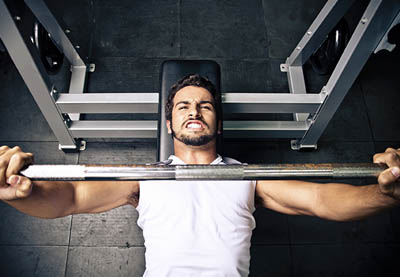Do We Gain from Pain, or Not?
October 11, 2016
You’re working hard at the gym, and here’s how you know: you’re sweating, your heart rate is in the zone, you're feeling “spent” and exhausted, and everything hurts.
Wait a minute—is your body supposed to hurt while you’re working out? And while we’re on the subject, what about afterward? Let’s take a look at the body language of pain.
During Your Workout
While you might try to power through your workout even though your back is tweaking or your ankles are on fire, it’s not always a good idea to press on. One rule of thumb for determining acceptable levels of discomfort during exercise is to put words into your body’s mouth—there’s a difference between it saying “oh boy this is tough. Good job!” and “Stop! Something’s not right here.”
A quick checklist for undesirable pain during your workout includes:
Pain in your joints. Examples: You’re swinging a kettlebell and suddenly your shoulder sends a shooting pain into your neck or back. Or you’re running on the treadmill and your hip starts sending pain into your glutes and thigh.
When your body is speaking to you specifically about the movements like this, change up what you’re doing and make sure the pain subsides. For our examples above, you might perform the same kettlebell motion without any weight, or stop running and use the elliptical.
Pain or tightness in your chest or jaw: Stop. Tell someone. Something’s off here. Sure it might just be shortness of breath, but it’s not worth the risk just to complete a workout.
Muscle cramps: Cramping is often thought to be a symptom of dehydration, but there are other causes you should be aware of. In general, if you feel sharp pull or sudden pain in a muscle during your workout, it’s time to stop. You might be “pulling” a muscle, a sign that you’re over-stretching or going too far and causing a strain or even a tear.
The Day After
Most of us have experienced that feeling that comes after an unusually grueling workout, or even after trying something new—the next morning it feels like you can barely get out of bed.
Delayed Onset Muscle Soreness (DOMS) typically starts about eight hours after your workout and peaks between 24 – 48 hours after training. It will likely start to fade pretty quickly, and by day three post-training the pain will diminish—but how much is okay?
Muscle discomfort: This is the most common sign of standard DOMS. It often occurs because you’ve changed your routine, added something new, or upped the intensity. DOMS is one way your body expresses muscle adaptation, which is generally good.
But DOMS is essentially caused by microtrauma to your muscle fibers. You don’t want serious damage to your body—and it’s not required to get a good workout. A bit of tenderness or diminished mobility that appears gradually over a couple of days is why you need to rest and recover. And that should relieve the discomfort.
Inhibited movement: Your connective tissue (tendons and ligaments) can take a beating, too. When that happens, the after-effects can be restricted range of motion, like it hurts to lift your arms, kick your leg, or even sit down.
You should be able to return to the same workout within three days as soreness subsides. That means you’re able to handle the same reps, weights and intensity a couple of days later. You want to work out so you can progress or maintain, not go backwards!